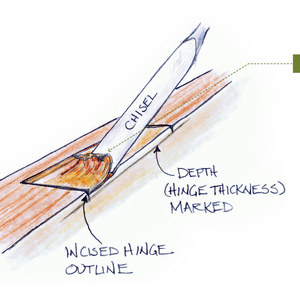*
how do you determine the run of a hip stringer in a pyramid stair system
Discussion Forum
Discussion Forum
Up Next
Video Shorts
Featured Story

Dangerous electrical work and widespread misconceptions cause fires, deaths, and $1.5 billion in property damage annually.
Featured Video
How to Install Cable Rail Around Wood-Post CornersHighlights
Fine Homebuilding Magazine
- Home Group
- Antique Trader
- Arts & Crafts Homes
- Bank Note Reporter
- Cabin Life
- Cuisine at Home
- Fine Gardening
- Fine Woodworking
- Green Building Advisor
- Garden Gate
- Horticulture
- Keep Craft Alive
- Log Home Living
- Military Trader/Vehicles
- Numismatic News
- Numismaster
- Old Cars Weekly
- Old House Journal
- Period Homes
- Popular Woodworking
- Script
- ShopNotes
- Sports Collectors Digest
- Threads
- Timber Home Living
- Traditional Building
- Woodsmith
- World Coin News
- Writer's Digest


















Replies
*
Mike,
I agree with Joe. Just exactly what do you mean by the term "pyramid stairs"? Are you refering to circular stairs?
*Mike I belive you are talking about the top tread being smaller then the bottom stair. We use this in a lot of decks. Let us know with some more factsBill CurryCurry Construction
*I think Mike is confused as all the rest in here.Mike, I am assuming that you have a stringer that flares wider at the bottom. You have correctly recognized that the run on this "hip" stringer will be greater than the run on the "common" stringers.The actual run will be figured by calculating the diagonal distance as figured from a "plan view".Example: figure the run for a flared set of stairs that are 3' wide at the top, 8' wide at the bottom, and have a total run of 6'.Assuming that both sides flare equally, the difference in width is 2.5' (that's 8' - 3' divided by 2). That is one leg of the trusty old right triangle. The other leg is established at 6'.Applying the Pythagorean theory will give you the total run of 6.5'. Divide this by the number of treads in your stair set, and viola'! Of course, the unit rise remains unchanged. I'll leave the sidecuts calculations for someone else. I'd probably eyeball them since I can't cut straight anyways.These are the identical calculations needed to find the run of any ordinary hip rafter.Hope this helps, comments and questions welcome!Blue in MI"According to my calculations, the problem doesn't exist."
*
how do you determine the run of a hip stringer in a pyramid stair system